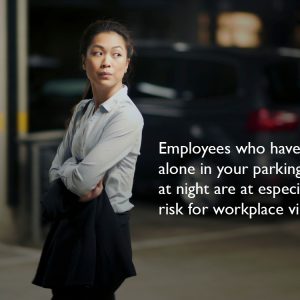
Cal/OSHA has proposed new regulations that would incorporate California’s new workplace violence prevention law — which took effect July 1 — into Title 8, the set of regulations that covers workplace safety in the Golden State.
However, the proposed rules add a number of new requirements that some safety observers say would be unworkable in many workplaces and may create burdensome new standards for employers to follow.
Under the law passed last year, SB 553, virtually all California employers are required to establish, implement and maintain an effective workplace violence prevention plan and effective procedures to respond to “actual or potential” workplace violence emergencies.
The proposed additional requirements surpass those set out in state Labor Code as a result of SB 553. Here’s a look at some of the most significant changes.
Workplace controls
The proposed regulations list a number of acceptable procedures and rules that can be used to effectively reduce workplace violence hazards, including:
- Appropriate staffing levels,
- Hiring dedicated security personnel,
- Effective means to alert employees of the presence, location and nature of a security threat,
- Control of visitor entry, and
- Methods and procedures to prevent unauthorized firearms and weapons in the workplace.
Engineering controls
The proposal adds a number of suggestions for engineering controls that can help prevent violence in the workplace. These include:
- Electronic or mechanical access controls to employee-occupied areas,
- Weapon detectors (installed or handheld),
- Enclosed workstations with shatter-resistant glass,
- Deep service counters,
- Spaces configured to optimize employee access to exits, escape routes and alarms,
- Separate rooms or areas for high-risk persons,
- Locks on doors,
- Affixing furniture to the floor,
- Opaque glass windows (which can protect privacy, but allow employees to see where potential risks are),
- Improving lighting in dark areas, sight-aids, enhancing visibility and removing sight barriers,
- Video monitoring and recording, and
- Personal and workplace alarms.
The proposed rules also list situations or locations that have a higher risk of workplace violence. These include:
- Employees working alone or in locations isolated from other employees,
- Areas with poor illumination or blocked visibility (such as blind spots),
- Entries to places of employment where unauthorized access can occur,
- Work locations that lack effective escape routes,
- The presence of money or valuable items such as jewelry or luxury goods,
- Frequent or regular contact with the public,
- Working late at night or early morning, and
- Selling, distributing or providing alcohol, marijuana or pharmaceutical drugs.
The draft language would bar employers from requiring or encouraging employees to confront individuals suspected of theft or of engaging in violence in the workplace, except for dedicated security staff.
Finally, the proposed regulations outline steps employers can take when responding to and then investigating a case of workplace violence, post-incident:
- Provide immediate medical care or first aid to workers who have been injured in the incident,
- Identify employees involved in the incident,
- For employers with more than 25 employees, make available individual trauma counseling to those staff affected by the incident,
- Conduct a post-incident debriefing as soon as possible after the incident with employees, supervisors and security involved in the incident,
- Identify and evaluate workplace violence hazards that may have contributed to the incident,
- Identify and evaluate whether appropriate corrective measures developed under the firm’s workplace violence prevention plan were effectively implemented, and if any new or additional corrective measures should be made, and
- Solicit from employees involved in the incident their opinions regarding the cause of the incident, and whether any measures would have prevented it.
The takeaway
The proposed rules are just the first step. They still have to go through a public comment period and the Division of Occupational Safety and Health, which writes new regulations.
However, the rules have already received plenty of pushback from employers.
Karen Tynan, an attorney specializing in workplace safety and health for the Ogletree Deakins law firm, told the Cal-OSHA Reporter that there are potential pitfalls in the added provisions. The examples of engineering and work practice controls “may be helpful to employers, but certainly we don’t want to see inspectors demanding these examples in every workplace,” she said.
She also criticized the post-incident response procedures as “overbroad and overly burdensome. The demand for a post-incident investigation report will be incredibly difficult for even mid-sized employers or employers who do not regularly face workplace violence hazards.”


